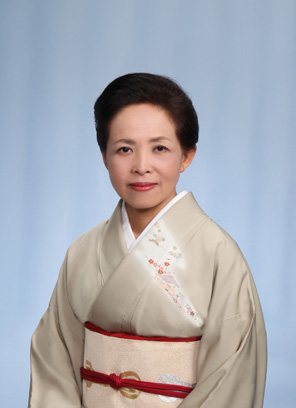![]()
Iemoto Nakashima Utashito / Nakashima Yasuko / Yuize Shin’ichi / Nakashima Kazuko
![]()
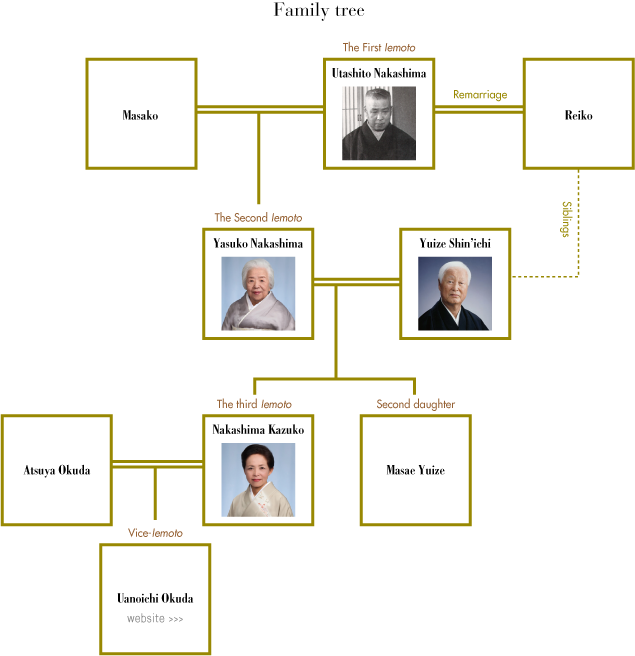
![]()
The First Iemoto: Nakashima Utashito (1896-1979)
The first iemoto and founder of the Seiha hōgaku-kai, Nakashima Utashito was born in Kyoto on 21 March 1896, and began studying the koto at the age of six.
In 1913, he established the Seiha Ikuta-ryū in Nagano, and began to promote and teach the koto professionally. When first announcing his intention to do so, Ōmiya Chiei and the people of the surrounding community were extremely supportive. The school’s name, Seiha, was chosen as it reflected Nakashima’s full training in the Ikuta tradition.
Utashito founded his school at the mere age of seventeen, and seven years later, moved the school to Tokyo from where he vigorously promoted the koto by performing throughout the country, including the former Japanese colonies of Manchuria and Mongolia. He soon had created a nation-wide organization populated with key figures who subsequently laid the foundations of the present-day institution.
Utashito devoted himself to his studies, and made every effort to improve his art and person. He composed numerous extremely fine works, including Waka no ura, Shōraifu, Yomo no umi and more. He travelled to Kumamoto where he studied sangen under Nagatani Yukiteru (1843-1920) and also became acquainted with Miyagi Michio (1894-1956). The two young musicians had long discussions about art, and the two close friends became seminal figures in the development of new Japanese music. They were closely connected with leading figures in several fields such as Tsubouchi Shōyō (1859-1935), Yamada Kōsaku (1886-1965), Machida Kashō (1888-1981), Nakao Tozan (1876-1956), and Tanabe Hisao (1883-1984), who all provided them with guidance and insights to the newly developing music.
The Seiha hōgaku-kai was responsible for a number of significant changes in Japanese music. Recognising the limits of oral transmission, Seiha began publishing scores. Another modification to traditional music education was the systematic inclusion of Western and Japanese music theory in an examination that included performance that awarded professional teaching status upon passing. Another notable change was the establishment of a nation-wide organisation with branch offices located throughout the country and a system of advisors. These characteristics distinguished the Seiha hōgaku-kai from other lineages who were to soon follow suit.
This new organisational structure allows the original Japanese iemoto system to respond to the needs of contemporary society. In 1956, the Seiha hōgaku-kai was the first traditional music organisation to be recognised by the Ministry of Education as a incorporated foundation with the first iemoto, Nakashima Utashito, as the president and board chairman.
The first iemoto realised that in order to promote the Japanese musical arts on a global stage, it was necessary to produce musicians capable of undertaking this task, and in 1959, he therefore established the Seiha Conservatory, produced a number of extremely fine musicians.
Nakashima Utashito passed away in 1979 at the age of 83, sixty-seven years after he had established the Seiha hōgaku-kai in Nagano with a single signboard. The same year, his daughter, Nakashima Yasuko, assumed the position of second iemoto, president and board chairman to continue her father’s works and unify the minds and hearts of the Seiha members in the promotion and development of Japanese music
![]()
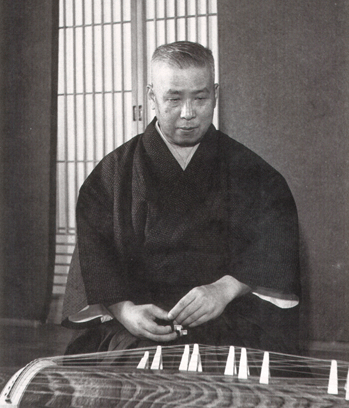
![]()
The Second Iemoto: Nakashima Yasuko
Nakashima (Yuize) Yasuko first began studying koto under her father, Nakashima Utashito, at a young age. She attended the Tokyo School of Music, the forerunner of today’s Tokyo University of the Arts, where she studied koto under Miyagi Michio, Miyagi Kiyoko, and composition under Hirai Kōzaburō.
In 1952, she participated in the design of a stand to increase the volume of the koto, which she subsequently used in the first performance of Hirai Kōzaburō koto concert with the Tokyo Philharmonic. She also represented Japan at the International Music Conference held in the United States, after which she was an exchange student at the Monterey Peninsula College in California.
In 1957, she married the koto performer and composer, Yuize Shin’ichi (1923-2015) after which the two held several joint concerts.
In 1958, she and her husband, Yuize Shin’ichi, represented Japan in the UNESCO International Music Festival held in Paris. The also toured the United States.
In 1979, Nakashima won the Japan Agency for Cultural Affairs Festival of the Arts for her concert of Yuize Shin’ichi’s compositions of 17-stringed bass koto.
In 2001, Pola Foundation for the Promotion of Traditional Japanese Culture awarded Nakashima the Traditional Japanese Culture award for her achievements in the promotion and preservation of koto music.
In 2004, Nakashima was awarded both the Matsuo Geinō Prize and the Ongaku Bunka Shinkō Kōrō Prize for her accomplishments as a performer and composer.
In 1947, Nakashima established the Seiha Ensemble, which she continues to direct. She has also been training the next generation of performers at the Seiha Conservatory since its inception in 1959.
Presently, she holds the titles of iemoto and honorary president of the Seiha hōgaku-kai public service incorporated foundation, the president of the Seiha Conservatory, and Representative of the Seiha Ensemble. She also serves as a supervisor for the Nihon sankyoku kyōkai , also a public service incorporated foundation. Nakashima is also the vice-president of the Ikuta-ryū kyōkai. She belongs to the Society for Research in Asiatic Music, the Association of Composers for Traditional Japanese Instruments, and the Mori-no-kai, an association formed by graduates of Tokyo University of the Arts koto department.
Representative compositions include the cantatas Akebono and Chinkonshō, Fuefukime, Haru, Natsu, Aki, Fuyu no Fūbutsushi, Buson no washi ni yoru Tōka, Jūshichi-gen dokusō no tame no yottsu no sokkyōkyoku, and many other vocal and solo works.
![]()
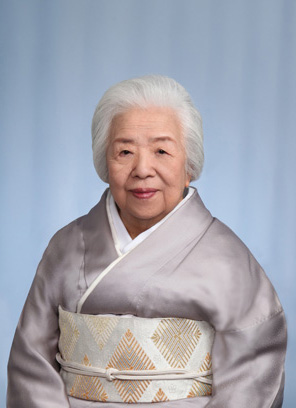
![]()
Yuize Shin’ichi
Yuize Shin’ichi was born in Hokkaido in 1923. After graduating from Otaru Kōtō Shōgyō University, present-day Otaru Shōka University, he entered the department of Traditional Japanese Music at the Tokyo School of Music, the present-day Tokyo University of the Arts. He was the first graduating class of the Tokyo University of Fine Arts’ Music Theory Program. In 1952 whilst still a university student, he entered a composition in the composition division of a traditional Japanese music contest sponsored by the Tokyo Shinbun, for which he was awarded first prize. He was also awarded the highest prize by the Ministry of Culture. After graduation, Yuize went to New York where he studied composition under Henry Cowell (1897-1965) at Columbia University. Later invited by the Rockefeller Foundation, Yuize returned to New York as a guest lecturer in the arts again at Columbia University.
From 1970, Yuize held yearly concerts in Japan, and performed widely overseas, with performance with the New York Philharmonic, the San Francisco Symphony at venues such as Carnegie Hall, the Lincoln Center. He was invited to perform in various festivals including the UNESCO World Music Festival, the Tehran International Music Festival, and more. As a composer, he held concerts of his works every autumn from 1959. He also directed the music for film and stage productions such as Nayotake,starring Higashiyama Noriyuki, Yōkihi,starring Bandō Tamasaburō, Yūzuru, also starring Bandō Tamasaburō, and Tenshu monogatari, starring Bandō Tamasaburō and Miyazawa Rie.
In 1988, Yuize was awarded the Medal with Purple Ribbon, and in 1995, the Fourth Order of the Rising Sun,Gold Rays with Neck Ribbon. Yuize received the Japan Art Academy Award. An honorary citizen of Tōno, Yuize taught at Columbia University, the Seiha Conservatory, and the NHK Ikuseikai program for young artists.
Yuize passed away 5 January 2015 at the age of 91.
![]()
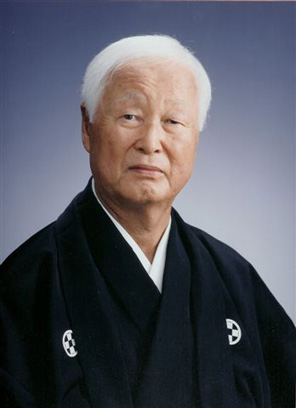
![]()
The Third-iemoto: Nakashima Kazuko
From an early age, Nakashima Kazuko studied piano and composition under Hirai Kōzaburō and Hirai Takejirō.
From 1972, she began studying shamisen under her father, Yuize Shin’ichi, and from 1978, shamisen under Yazaki Akiko.
In 1985, she graduated from the NHK Hōgaku Ikusei-kai.
In 1986, she passed with honours the Seiha hōgaku-kai shihan examination.
From 1987, she began participating in the Yuize Shin’ichi Family Concert Series.
In 1988, Nakashima Yasuko appointed her as an assistant instructor at the Seiha dōjō.
In 1990, she completed the Agency for Cultural Affairs’ Training Programme.
In 1995, she held her first recital.
In 1998, she participated in the Seiha hōgaku-kai’s summer workshop in San Diego, California, and also performed in a concert held in San Diego at this time. She participated in the same workshop and concert held in San Francisco, California in 2004.
In 2004, she served as a B class instructor for the Foundation for Promotion of Music Education and Culture’s workshop for the Development of Lifelong Learning Music Instructors.
In 2007, she changed her artistic name from Okuda Masako to Nakashima Kazuko and was designated vice-iemoto.
Presently, she is the president of the Seiha hōgaku-kai, the vice-iemoto, an instructor for the Seiha dōjō, and an instructor for the Seiha Conservatory. She is also a standing director of the Nihon sankyoku kyōkai , and an advisor for the Japan Traditional Cultures Foundation.
![]()
